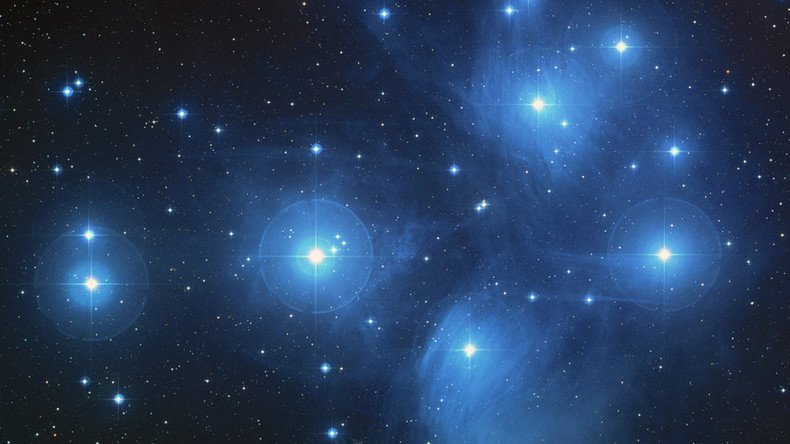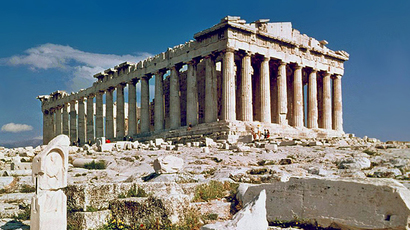Time travel to Ancient Greece: Scientists recreate night sky to date 2,500 yr-old poem

If you wonder what the night sky over Ancient Greece looked like, scientists from a Texas university may satisfy your curiosity as they have recreated it using the most advanced planetarium software, to work out the exact date of an ancient lyric poem.
The experiment described in the Journal of Astronomical History and Heritage used software called Starry Night version 7.3 and Digistar 5. It served as a sort of time machine transporting physicists and astronomers from the University of Texas to Ancient Greece. They were able to study the night sky over the Greek island of Lesbos, which inspired Sappho to compose her “Midnight Poem” hundreds of centuries ago.
Apart from enjoying the undoubtedly stunning view, during “time travel” the group of scientists from Arlington also managed to identify accurately when Sappho’s piece was written.
'In the Days of Sappho', by John William Godward. An English neo-classicist, he took his own life in 1922 at 61. pic.twitter.com/1ObB6xNYHS
— Ian Battaglia (@IanJBattaglia) April 24, 2016
Though quite laconic, the five stanzas provide a vivid description of the firmament, leading the experts to establish the poem dates back to 570 B.C.
“Estimations had been made for the timing of this poem in the past, but we were able to scientifically confirm the season that corresponds to her specific descriptions of the night sky in the year 570 B.C.,” according to Manfred Cuntz, lead author and physics professor at the University of Texas at Arlington.
Sappho’s work mentions the Pleiades – one of the nearest and most noticeable star clusters to Earth, The constellation is often used by sailors for navigation.
Cuntz, his team and astronomer Levent Gurdemir, director of the Planetarium at UTA, identified the earliest day, January 25, and the latest day, March 31, that the luminous group of stars would have been visible to Sappho in 570 B.C.
“From there, we were able to accurately seasonally date this poem to mid-winter and early spring, scientifically confirming earlier estimations by other scholars,” Cuntz said.
“The timing question is complex as at that time they did not have accurate mechanical clocks as we do, only perhaps water clocks. For that reason, we also identified the latest date on which the Pleiades would have been visible to Sappho from that location on different dates some time during the evening,” he added.
The experiment is a reminder of what Sherlock Holmes did with a lost masterpiece by Vermeer in an episode of the BBC series. He proved the painting to be fake by detecting an exploding star in the background – the Van Buren supernova. It appeared in 1858, whereas Vermeer lived and worked in the 17th century.
Though this may seem an ingenious deduction impossible in real life, the script actually concurs with what the Texas university did in 2014. This kind of artistic forensics helped astrophysicist Donald Olson and his team date a series of painting by Claude Monet.
Olson is a well-known art sleuth who also determined the location of Julius Caesar’s landing when he invaded Britain in 55 B.C. The scientist also carried out research on Munch’s The Scream, Chaucer’s Canterbury Tales and Ansel Adam’s photography.













